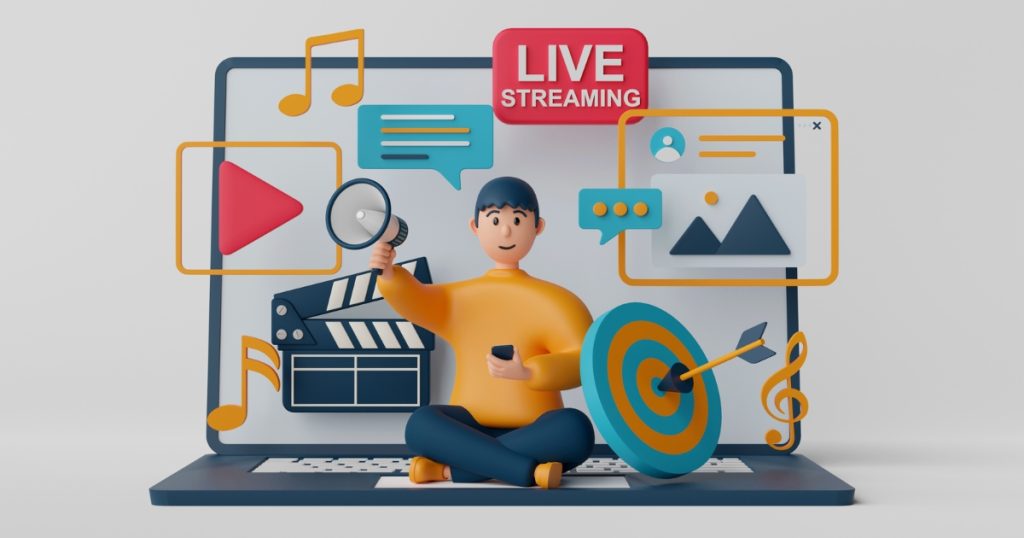The world of online video editing is evolving daily. Since the widespread use of AI, advancements have become hard to predict. But as we approach new possibilities it’s only natural to look ahead.
The questions that naturally come up when thinking about the future are: What’s next? What trends and developments can we expect in the coming years? And most importantly, how will these changes impact the way we create and consume video content? These are the questions we aim to address in this blog.
If you’re as excited about considering the future’s possibilities, you’re in for an interesting journey. In this blog, we’ll explore the world of online video editing and reveal the predictions and trends that will shape its future. So, if you’re as curious about tomorrow’s potential as we are, keep reading.
Before we explore video editing trends, we would like to introduce you to InVideo and Wave.video. These platforms are changing how we edit and create videos online. They’re user-friendly and powered by AI, making advanced video editing accessible now.
The AI Revolution in Video Editing

Before looking at what is coming, lets take a look at how Artificial Intelligence (AI) has transformed online video editing by improving efficiency and creativity:
Automated Editing Guidance
AI-powered video editing tools act as virtual expert editors. They use AI algorithms trained on extensive libraries of professionally edited videos to analyze your raw footage and provide editing recommendations.
These suggestions may include where to start your video, propose seamless transitions between clips, or even offer color grading options that match your desired mood.
AI-Generated Content
AI isn’t just assisting with editing; it’s also becoming a content creator. AI can create human-like voiceovers, allowing video creators to add narration or dubbing without human voice actors.
AI-powered tools can also generate subtitles, translate content between languages, and assist with scriptwriting. These capabilities broaden possibilities for content production and adaptation.
Advanced Visual Effects
AI is expanding the potential of visual effects. Algorithms can automatically remove background objects or replace green screens with computer-generated environments. This is especially useful in the film and entertainment industry, where intricate CGI can be demanding and time-consuming to create manually.
Personalized Viewer Experiences
AI improves the viewer experience with personalized content suggestions. Platforms use AI to understand viewer behavior and preferences, providing custom recommendations. This keeps more viewers engaged and makes sure they receive content that interests them.
10 Online Video Editing Trends and Predictions for 2024
1. Voice-Controlled Editing: With the advent of voice assistants like Alexa, Siri, and Google Assistant, the next wave of editing platforms could very well be voice-activated. Users might soon be directing edits, applying effects, or navigating interfaces with simple voice commands.

2. Integration with Emerging Social Platforms: As new social media platforms emerge and gain popularity, online video editing tools will offer direct integrations, making sure that content is optimized and easily shareable across a variety of channels.
When you want to share your video on the latest social media platform, the editing tool automatically adjusts the video’s size and format so it looks great on that platform, just like it does now when you share videos on Instagram or TikTok.
3. VR and AR Editing Capabilities: As VR and AR content becomes more mainstream, editing platforms will add features to improve this type of content.
You could easily adjust the size and position of virtual objects in an augmented reality scene, making it look more realistic.
4. Enhanced Mobile Editing: With the rise of mobile journalism and content creation, editing platforms will improve their mobile interfaces and capabilities. These will allow editors to create great content, whether they’re in a studio or on a mountaintop.
5. Enhanced Security Protocols: With the increasing threats of cyber-attacks and data breaches, editing platforms will prioritize security. Advanced encryption methods, two-factor authentication, and regular security audits will make sure that users’ content remains protected at all times.
Your editing software employs facial recognition to ensure that only you can access your editing projects. It will also alert you if someone tries to access your work without permission

6. Mood-Based Editing: Using AI, mood-based editing tools can change a video’s tone, music, and colors to match a creator’s desired emotion. For a sad feel, it might use softer colors and slow music. For a lively mood, it would pick bright colors and upbeat tunes.
7. 3D Video Editing: As 3D content becomes popular, especially in ads and games, editing tools will support creating 3D videos.
If for example you’re editing a promotional video for a new product, and you want to highlight its features in 3D. The software allows you to adjust the depth of field, add 3D text, and even incorporate interactive 3D models.

8. Adaptive AI Learning: Future editing software will get smarter. It’ll learn from each user’s style and preferences. Over time, it’ll offer personalized tips and automate common tasks, making editing smoother.
For example the software recognizes that you prefer a particular font style for your text overlays and consistently applies it. Over time, it anticipates your font choice and offers it as a default.
9. 360-Degree Editing: As virtual reality (VR) and 360-degree video content become more popular, the tools for editing such videos will need to advance. Expect more features designed specifically for editing 360-degree videos, opening up new creative possibilities.
Editing software for 360-degree videos offers a simplified interface for blending different perspectives in your footage. You can easily add interactive hotspots, allowing viewers to explore various angles and details within the video.

10. Multi-sensory Integration: It won’t just be about what you see and hear. Future video editing will incorporate other senses, like touch. Imagine feeling the rhythm of a scene or the emotions of characters.
As you edit a scene where a character is playing a musical instrument, you can use touch feedback to sync the vibration with the music’s rhythm, making the scene more emotionally powerful.
Conclusion
As we look to the future of online video editing, we’re not only met with technological progress but also a growing understanding of the importance of accessibility and inclusivity. This positive trend promises to make video editing more empathetic and considerate. It’s not just about tools and methods; it’s about creating an environment where creativity has no limits.
In the coming years, we can expect video editing to become more user-friendly and fair, breaking down barriers for creators and viewers alike. Whether you’re an experienced professional or a beginner, these transformative changes will improve the storytelling experience.
So, as we begin the journey into the future of online video editing, let’s welcome these evolving trends with excitement. Together, we’ll create a more welcoming, user-oriented, and inspiring world of visual storytelling.
We at Goodish agency are experts in digital marketing and we can help you to utilize AI to reduce your costs and boost your performance. Read more about our services.







![InVideo vs Wave.video - Comparison [2023]](https://goodish.agency/wp-content/uploads/2023/08/low_small-1024x683.jpg)





